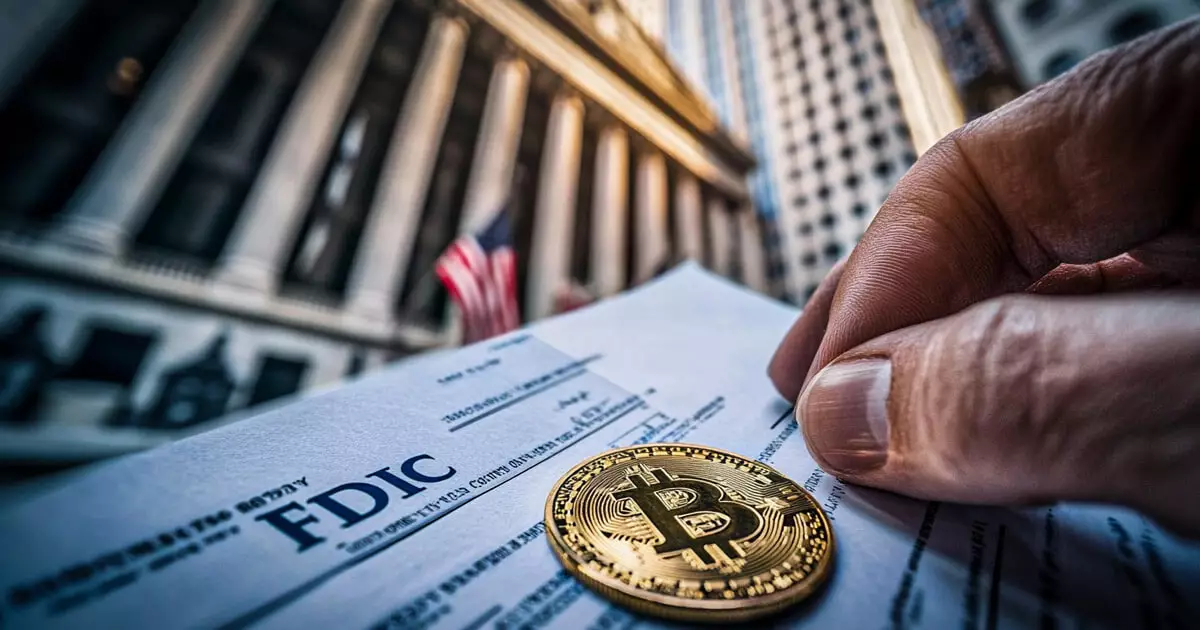The landscape of banking is undergoing significant transformations as digital assets gain traction, prompting institutions like the Federal Deposit Insurance Corporation (FDIC) to reconsider their regulatory frameworks. Recently, changes in the FDIC’s guidelines surrounding banking and cryptocurrencies have raised eyebrows. The agency has signaled a potential shift that may ease the barriers for banks engaging in crypto-related activities without extensive pre-approval processes. This article examines the implications of these changes, the challenges faced by banks, and the broader context of regulatory strategies.
On February 5, reports surfaced that the FDIC is preparing to revise its approach regarding banks venturing into cryptocurrency services. This potential shift could mark a significant departure from the strict regulatory landscape that has hindered many financial institutions from fully engaging with digital assets. By moving toward a more accommodating regulatory environment, the FDIC is allowing banks to explore avenues such as offering crypto custody services and implementing tokenized deposits—alternatives to traditional stablecoins that may integrate blockchain technology into everyday banking.
The concept of tokenized deposits exemplifies an innovative approach to banking that blends the benefits of cryptocurrencies with conventional financial practices. These deposits would allow individuals to leverage the advantages of blockchain, potentially enhancing transparency and efficiency in banking operations. As banks explore these new frontiers, they could redefine customer experiences, creating more appealing options for tech-savvy consumers eager to engage with digital finance.
Recently, the FDIC released a trove of documents related to their interactions with banks involved in crypto activities, shedding light on the agency’s nuanced stance. Historically, the FDIC issued “pause letters” to several banks, essentially instructing them to halt or reconsider their crypto-related services. These communications indicated a restrictive environment where banks felt discouraged from pursuing innovative offerings. The documents released on February 5 illustrate a fundamental tension between the desire to cautiously explore new technology and the inherent risks the FDIC is keen on mitigating.
Travis Hill, acting chairman of the FDIC, expressed a commitment to transparency through the release of these documents, which were initially requested by Coinbase. This transparency is crucial as it signals a new chapter in the relationship between regulatory bodies and financial institutions. However, the documents are not without controversy. They reveal a pattern where banks frequently encountered resistance when trying to engage with crypto, effectively leading to widespread hesitance to pursue such services.
Coinbase Chief Legal Officer Paul Grewal has voiced concerns over the extensive redactions in the documents, suggesting that pertinent information regarding the regulatory environment is being withheld. His allegations point to an apparent effort by the FDIC to suppress communications about the challenges banks face when navigating the regulatory landscape under pressure. Regulators employing a tactic described as “regulation by exhaustion” indicates a strategy of overwhelming banks with inquiries to the point of discouragement, thereby stifling innovation.
This revelation raises questions about how proactive the FDIC should be in promoting responsible innovation versus pursuing a more cautious approach. According to insiders, the FDIC cited several concerns, including volatility in Bitcoin values and perceived risks to consumer protection, as reasons for the regulatory reticence. While these concerns are valid, the question remains whether regulatory frameworks designed for the traditional financial system can adequately address the unique challenges posed by digital assets.
The FDIC’s willingness to reconsider its stringent stance may signify the dawning of a new era for banking in which digital assets play an essential role. The gradual shift towards allowing banks to engage in crypto services could foster greater innovation within the banking sector, improving competitiveness and consumer choice. However, the challenge remains in striking the right balance between fostering growth and ensuring robust consumer protections.
Moreover, the internal discussions among FDIC officials hint at a cautious approach characterized by apprehension over cryptocurrencies. Future regulatory updates will likely require exhaustive analysis and input from various stakeholders, including banks, legal experts, and crypto advocates, to create a framework that encourages progress while safeguarding public interests.
As the FDIC seeks to evolve its guidelines concerning crypto-related activities, banks stand poised at a crossroads. The path forward may hinge on collaborative efforts to bridge the gap between traditional banking practices and the exciting possibilities presented by digital currencies, ultimately carving out a space for innovation within a regulated environment.

